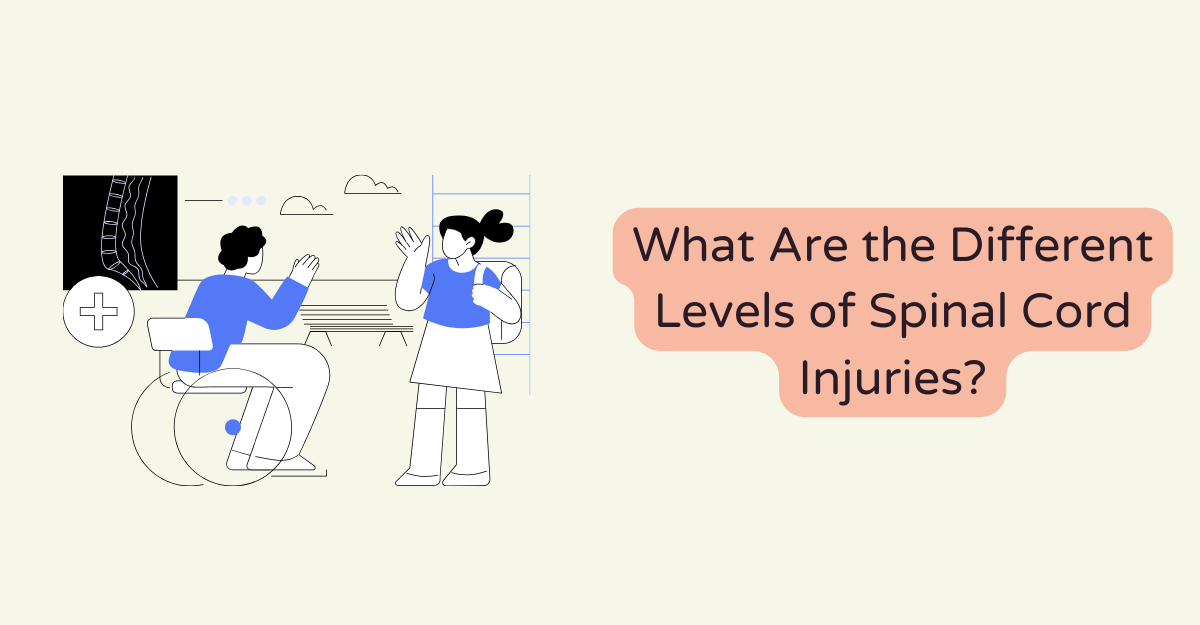
What Are the Different Levels of Spinal Cord Injuries?
Spinal Cord Injuries (SCIs) are complex conditions that can significantly impact an individual’s life. Understanding the different levels of spinal cord injuries is crucial for patients, caregivers, and healthcare professionals alike. In this article, we’ll delve into the classification, causes, treatment options, and legal aspects of spinal cord injuries, including the importance of consulting with an experienced personal injury lawyer.
Classification of Spinal Cord Injuries
The ASIA Impairment Scale (AIS) is a standardized tool used by healthcare professionals to assess and classify spinal cord injuries. This scale ranges from A to E, with each level providing insights into the extent of impairment.
- AIS Level A (Complete Injury): Individuals with level A injuries experience a complete loss of motor and sensory function below the injury site. This means no voluntary muscle movement or sensation is retained.
- AIS Level B (Incomplete Injury – Sensory Only): Level B injuries indicate an incomplete loss of motor function but a complete loss of sensory function below the injury site. Patients may retain some sensation but lack voluntary muscle control.
- AIS Level C (Incomplete Injury – Motor Function Preserved): Individuals with level C injuries have preserved motor function, but only half of the key muscles can move against gravity. Sensation is also incomplete.
- AIS Level D (Incomplete Injury – Motor Function Preserved with More Than Half of Key Muscles Moving Against Gravity): At this level, there’s further preservation of motor function, with more than half of the key muscles able to move against gravity. Sensory function may still be incomplete.
- AIS Level E (Normal): Level E indicates a normal neurological function. Both motor and sensory functions are fully intact.
Understanding the AIS allows healthcare professionals to tailor treatment plans and predict potential functional outcomes for patients with spinal cord injuries.
Complete vs. Incomplete Spinal Cord Injuries
Differentiating between complete and incomplete spinal cord injuries is crucial for prognosis and treatment planning.
- Complete Spinal Cord Injuries: In cases of complete injuries, the spinal cord is fully severed, resulting in a total loss of motor and sensory functions below the injury site. Patients may experience paralysis and loss of sensation, impacting their ability to move and feel in affected areas.
- Incomplete Spinal Cord Injuries: Incomplete injuries involve partial damage to the spinal cord, allowing for varying degrees of motor and sensory function preservation. This can result in a range of outcomes, from mild weakness or sensory loss to more significant impairments. The prognosis for recovery in incomplete injuries is generally more optimistic compared to complete injuries.
Common Causes of Spinal Cord Injuries
Spinal cord injuries can be caused by a variety of factors, both traumatic and non-traumatic.
Traumatic Causes
- Motor Vehicle Accidents: High-speed collisions and accidents are major contributors to spinal cord injuries. The force and impact during these incidents can lead to fractures or dislocations of the vertebrae, damaging the spinal cord.
- Falls: Falls from heights or on slippery surfaces can result in spinal cord injuries, particularly in older adults.
- Sports Injuries: Contact sports or activities with a high risk of collision can lead to spinal cord trauma. Proper protective gear and adherence to safety guidelines are essential in preventing such injuries.
Non-Traumatic Causes
- Degenerative Disc Disease: Gradual wear and tear on the spine over time can lead to conditions like herniated discs, which may compress the spinal cord and cause injury.
- Tumors: Spinal tumors, whether benign or malignant, can exert pressure on the spinal cord, leading to injury.
- Infections: Infections affecting the spinal cord, such as meningitis or abscesses, can result in inflammation and damage.
Treatment Options for Spinal Cord Injuries
Effective management of spinal cord injuries involves a multidisciplinary approach, encompassing various treatment options.
Emergency Medical Interventions
- Stabilization: Immediate stabilization of the spine is crucial to prevent further damage. This often involves the use of braces or traction.
- Medication: Administration of medications to reduce inflammation and manage pain.
Surgical Interventions
- Spinal Decompression: Surgery may be necessary to relieve pressure on the spinal cord caused by fractures, herniated discs, or other structural issues.
- Fusion and Stabilization: Surgical fusion of vertebrae and stabilization with hardware may be performed to enhance spinal stability.
Rehabilitation and Physical Therapy
- Physical Therapy: Targeted exercises and rehabilitation programs aim to improve strength, flexibility, and overall function.
- Occupational Therapy: Focuses on adapting daily activities to enhance independence and quality of life.
Assistive Devices and Adaptive Technologies
- Wheelchairs and Mobility Aids: Customized devices help individuals with spinal cord injuries regain mobility.
- Assistive Technologies: Advancements in technology provide tools like voice-activated devices and environmental control systems, enhancing independence for those with limited mobility.
Legal Aspects of Spinal Cord Injuries
Navigating the legal landscape is essential for individuals with spinal cord injuries to ensure their rights and entitlements are protected.
Overview of Legal Rights for SCI Patients
- Disability Rights: Individuals with spinal cord injuries have rights protected under disability laws, ensuring equal access to public spaces, employment, and services.
- Medical Malpractice: Legal recourse may be pursued if the injury resulted from medical negligence or malpractice.
Compensation and Legal Recourse for Spinal Cord Injuries
- Personal Injury Claims: Victims of spinal cord injuries may be entitled to compensation for medical expenses, rehabilitation costs, and loss of income.
- Workers’ Compensation: If the injury occurred in the workplace, workers’ compensation benefits may be available.
Seeking legal advice early in the process can help individuals understand their rights, assess the validity of potential claims, and navigate the complexities of the legal system. Understanding the legal aspects surrounding spinal cord injuries is crucial for ensuring justice and securing the necessary resources for comprehensive care.






